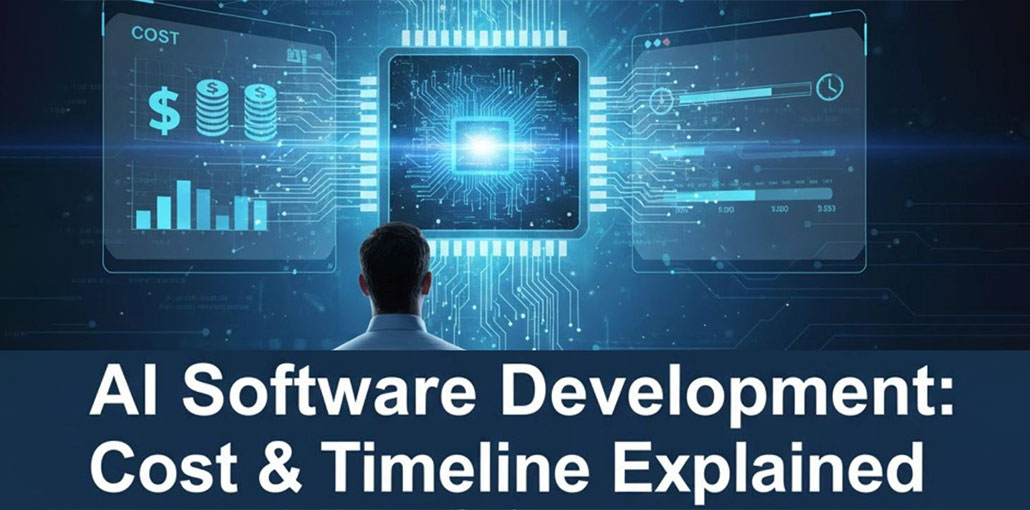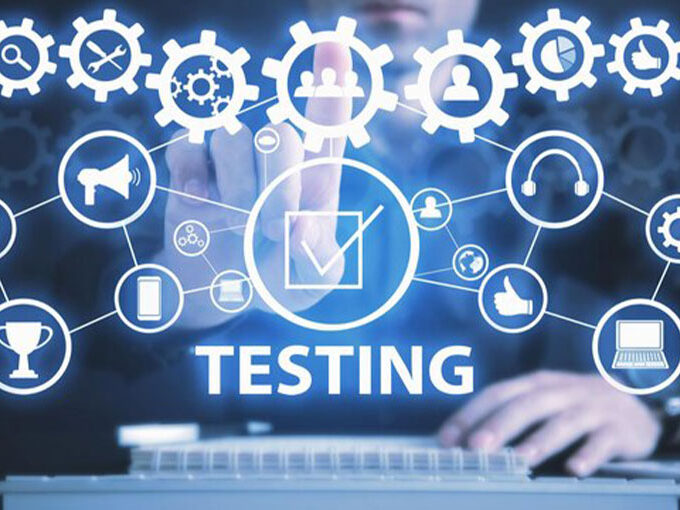Artificial Intelligence is no longer a futuristic concept. It has become a core part of how businesses make decisions, automate processes, and deliver better customer experiences. From predictive analytics to personalized marketing, AI technology is transforming how organizations operate and compete.
For companies planning their first AI project, understanding cost, timeline, and realistic expectations is essential. Developing AI software is a strategic investment that involves data, algorithms, integration, and most importantly, people.
Why Businesses Are Turning to AI
The amount of business data created daily is overwhelming. Traditional systems struggle to interpret this data efficiently. AI systems, on the other hand, can analyze large datasets quickly, uncover trends, and make predictions that improve decision-making.
Businesses are using AI to:
- Automate routine tasks and reduce labor costs
- Enhance customer experience with chatbots and personalization
- Improve forecasting and resource allocation
- Detect fraud and anomalies in financial systems
- Analyze market behavior and customer sentiment
The growing accessibility of cloud-based machine learning tools has made AI more attainable for small and mid-size companies. However, for sustainable value, organizations need custom-built AI Software Development Solutions that align directly with their business goals instead of relying on generic third-party tools.
Also read: 7 Things How AI Transforms Software Development
How Much Does AI Software Development Cost?
AI software development cost depends on the project’s complexity, required features, and available data quality. Based on average market benchmarks, here are typical cost ranges:
- Basic AI prototype or proof of concept: $20,000 – $30,000
- Mid-level custom solution: $40,000 – $100,000
- Full enterprise AI platform: $100,000 – $500,000 or more
The cost variation is wide because different projects require different levels of modeling, data preparation, and infrastructure. For instance, a chatbot that answers common questions will be cheaper to build than an AI engine that analyzes millions of transactions to recommend products in real time.
Main Factors That Affect AI Development Cost
When planning an AI project, several cost drivers determine how much you will invest. Understanding these factors will help you allocate your budget wisely.
1. Project Complexity
The more advanced the AI capability, the higher the cost. Simple models like classification or sentiment analysis can be developed quickly. Complex systems such as computer vision, deep learning, or natural language processing require more data, experimentation, and computational power.
2. Data Availability and Quality
AI models rely on clean, labeled, and structured data. If your data is scattered, inconsistent, or incomplete, a large part of your budget will go into preparing it. Many companies underestimate this phase, yet it often consumes 60 to 80 percent of project time.
3. Technical Team and Expertise
AI development involves data scientists, engineers, domain specialists, and designers. Hiring or partnering with experts significantly affects cost. The more advanced your system’s goals, the more specialized your team needs to be.
4. Infrastructure and Tools
Hosting, computing resources, and cloud environments all impact cost. Cloud-based platforms like AWS or Azure can reduce upfront infrastructure expenses, but they require ongoing subscription fees.
5. Integration and Maintenance
Building the AI model is just one step. Integrating it into your existing systems, training your team, and maintaining it over time will require continuous effort and budget. Successful AI projects include a long-term maintenance plan from day one.
AI Software Development Timeline
The timeline of an AI project depends on its scale and objectives. Here is a general overview of what most businesses can expect:
| Project Type | Timeline | Example Use Case |
| Proof of Concept | 1–3 months | Chatbot, text classifier, or basic recommendation tool |
| Mid-level Solution | 3–6 months | Predictive analytics, data visualization dashboard |
| Enterprise Platform | 6–12 months or longer | Custom automation, AI-powered decision support |
These timeframes reflect typical industry averages. Projects that involve large datasets, multiple integrations, or regulatory requirements can extend further.
Stages of AI Software Development
Every successful AI project follows a structured development process. Here is what happens at each stage.
1. Discovery and Planning (4–8 weeks)
This is where the vision becomes a plan. The team defines project goals, expected outcomes, available data, and technical requirements. Feasibility studies are done to confirm that the data and resources are sufficient. The timeline, milestones, and estimated costs are also finalized here.
2. Data Preparation (1–3 months)
This phase involves collecting, cleaning, and organizing data for the model. Missing values, duplicates, and irrelevant information are removed. If data labeling is required, it is done during this phase. The better your data, the more accurate your model will be.
3. Model Development (2–6 months)
The data scientists select algorithms, train models, and validate their performance. Multiple versions of the model may be built to compare results and identify the most accurate one. The goal is to achieve reliable predictions or classifications that align with the project’s objectives.
4. Integration and Testing (1–2 months)
Once the model is ready, it is connected with your software or business systems. The testing team ensures the AI performs correctly in real-world conditions. Performance, security, and usability tests are carried out before deployment.
5. Deployment and Optimization (Ongoing)
After the launch, continuous monitoring begins. Real-world data often behaves differently from training data, so periodic tuning is necessary. The system is updated and retrained as new data arrives or business needs change.
Planning for Your First AI Project
Starting an AI project can feel complex, but a structured approach helps reduce risk. Here are the steps to make the process smoother:
- Identify a single, focused use case: Start small with a problem that has measurable business value.
- Ensure data readiness. Clean and organize your data before model training begins.
- Develop a Minimum Viable Product (MVP). Validate your idea with a basic working model.
- Adopt agile development. Build in small, testable phases to stay flexible.
- Budget for maintenance and improvement. AI systems evolve with data and need continuous refinement.
- Measure success by outcomes, not just accuracy. Focus on business performance, cost reduction, or customer satisfaction.
Also read: How Do KPIs Measure the Success of an AI Project?
How to Reduce Development Cost
AI development can be expensive, but there are proven ways to optimize spending without sacrificing quality.
- Use pre-trained models: Instead of building from scratch, fine-tune existing models available through open-source frameworks or cloud providers.
- Leverage cloud AI services: Platforms like Google Cloud AI, AWS SageMaker, or Azure Machine Learning reduce hardware costs and simplify deployment.
- Automate data handling: Use modern data processing pipelines to save time during cleaning and preparation.
- Outsource specialized tasks: Contracting short-term AI experts can be more cost-effective than hiring full-time specialists for small projects.
- Set realistic goals: Avoid overengineering features that provide little measurable value.
The Realistic Expectations for Your First AI Project
Most businesses expect instant results from AI, but the reality is more gradual. The first version of your system is a foundation. It collects insights, identifies challenges, and helps your team understand how AI interacts with your data and workflows.
Once that foundation is in place, future upgrades become faster, more efficient, and more valuable. The key is to view AI not as a one-time product, but as an evolving system that learns alongside your business.
Conclusion
AI software development is one of the most strategic investments a business can make. While the cost and timeline may seem significant, the long-term benefits in automation, insight, and scalability are far greater.
Success depends on planning clearly, managing data effectively, and preparing your team for adoption. Start small, measure results, and improve continuously. Over time, your AI system will evolve into a powerful asset that drives growth, reduces costs, and strengthens your competitive position.










Leave a comment